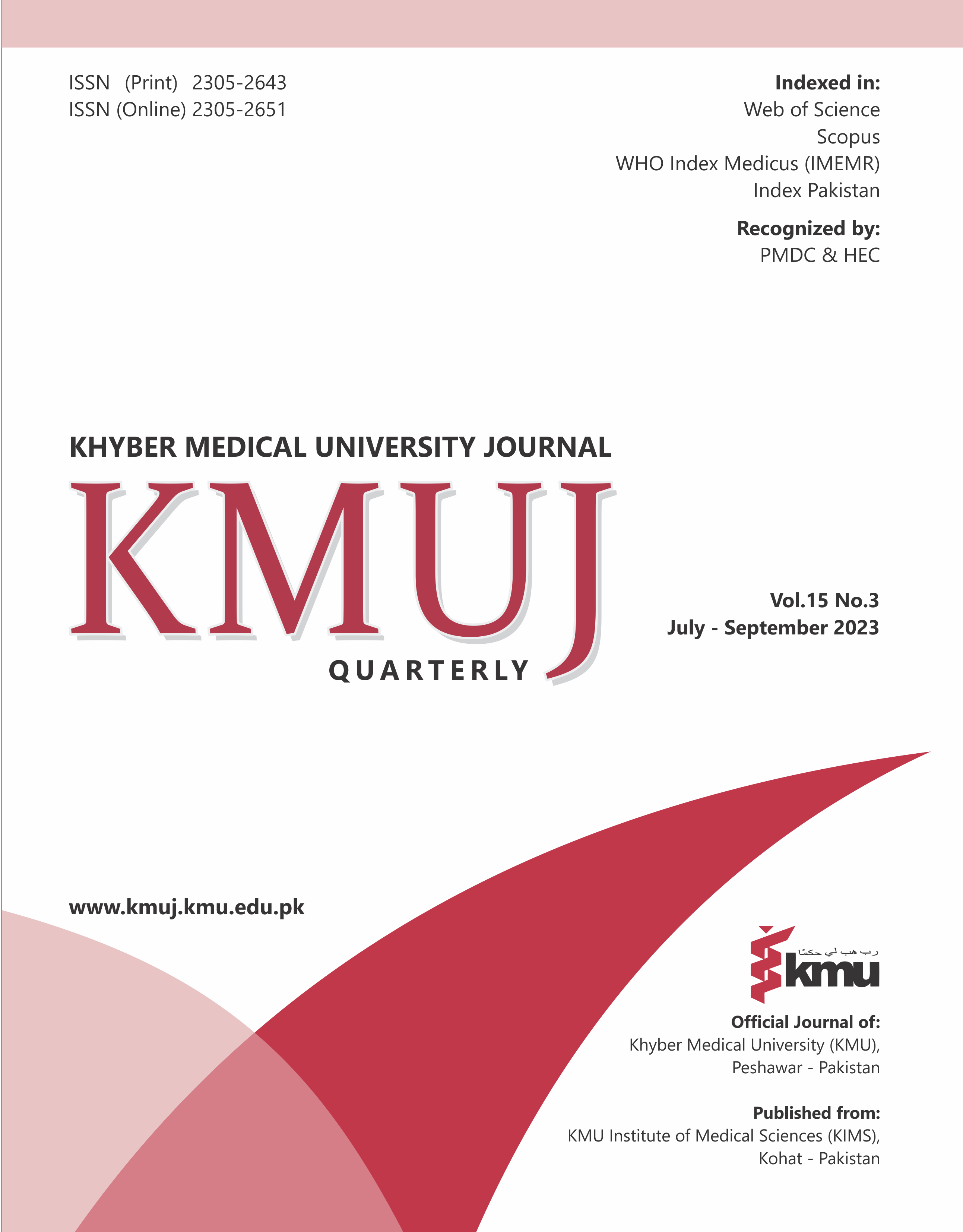Hyperammonemia in patients on Valproic Acid therapy in a tertiary care hospital of Karachi
Main Article Content
Abstract
OBJECTIVE: to assess the incidence of hyperammonemia in patients receiving valproic acid (VPA) therapy.
METHODS: This cross-sectional study was conducted at the Department of Neurology, Ziauddin Medical University and Hospital, Karachi, for six months from April to October 2019. A total of 158 patients of both genders, aged between 18 to 80 years, presented in emergency with complaints of seizures and who had received a minimum dose of valproic acid before blood withdrawal were included. Pregnant women, patients with cirrhotic liver, or chronic renal impairment were excluded from the study.
RESULTS: Out of 158 patients, 80 (50.6%) were females and 78 (49.4%) were males. Mean age of patients was 55.53±18.26 years. Among the participants, 27 (17.1%) had undergone VPA therapy for 30 days or more, while 131 (82.9%) had received it for less than 30 days. The mean duration of VPA therapy was 8.58±10.41 days. Among the 158 patients, 95 (60.1%) with seizures receiving VPA treatment were diagnosed with hyperammonemia. The mean serum ammonia level was 66.50±44.59 mg/dL, and mean VPA dose administered was 1000±125 mg/day. There was a statistically significant association between the dose of Valproic Acid and the incidence of hyperammonemia (p <0.05). Patients receiving a daily dose of Valproic Acid exceeding 1000 mg were more likely to develop hyperammonemia.
CONCLUSION: This study revealed a high incidence of hyperammonemia among patients undergoing VPA therapy, with 60.1% of the total patients receiving VPA therapy experiencing hyperammonemia.
Article Details
Work published in KMUJ is licensed under a
Creative Commons Attribution 4.0 License
Authors are permitted and encouraged to post their work online (e.g., in institutional repositories or on their website) prior to and during the submission process, as it can lead to productive exchanges, as well as earlier and greater citation of published work.
(e.g., in institutional repositories or on their website) prior to and during the submission process, as it can lead to productive exchanges, as well as earlier and greater citation of published work.
References
Gugler R, von Unruh GE. Clinical pharmacokinetics of valproic acid. Clin Pharmacokinet 1980;5:67-83. https://doi.org/10.2165/00003088-198005010-00002
Segura-Bruna N, Rodriguez-Campello A, Puente V, Roquer J. Valproate-induced hyperammonemic encephalopathy. Acta Neurol Scand 2006;114(1):1-7. https://doi.org/10.1111/j.1600-0404.2006.00655.x
Coulter DL, Allen RJ. Hyperammonemia with valproic acid therapy. J Pediatr 1981;99(2):317-9. https://doi.org/10.1016/S0022-3476(81)80489-1
Kowalski PC, Dowben JS, Keltner NL. Ammonium: the deadly toxin you don't want to miss when using mood stabilizers. Perspect Psychiatr Care 2013;49(4):221-5. https://doi.org/10.1111/ppc.12040
Yamamoto Y, Takahashi Y, Suzuki E, Mishima N, Inoue K, Itoh K, et al. Risk factors for Hyperammonemia associated with valproic acid therapy in adult epilepsy patients. Epilepsy Res 2012;101:202-9. https://doi.org/10.1016/j.eplepsyres.2012.04.001
Yamamoto Y, Takahashi Y, Imai K, Mishima N, Yazawa R, Inoue K, et al. Risk factors for Hyperammonemia in pediatric patients with epilepsy. Epilepsia 2013;54:983-89. https://doi.org/10.1111/epi.12125
Hafeez Q- ul-A. Interaction between Meropenem and Valproate: Not to overlook. Int J Endor Health Sci Res 2016;4(1):27-1. https://doi.org/10.29052/IJEHSR.v4.i1.2016.27-31
Iqbal K, Kummamuru H, Dasari N, Koritala T, Jain NK, Deepika K, et al. A case of valproic-acid induced hyperammonemic encephalopathy. Cureus 2021;13(12):e20380. https://doi.org/10.7759/cureus.20380
Amanat S, Shahbaz N, Hassan Y. Valproic acid induced hyperammonaemic encephalopathy. J Pak Med Assoc 2013;63(1):72-5.
Baddour E, Tewksbury A, Stauner N. Valproic acid–induced Hyperammonemia: Incidence, clinical significance, and treatment management. Ment Health Clin 2018;8(2):73-7. https://doi.org/10.9740/mhc.2018.03.073
Tseng YL, Huang CR, Lin CH, Lu YT, Lu CH, Chen NC, et al. Risk factors of Hyperammonemia in patients with epilepsy under valproic acid therapy. Medicine (Baltimore) 2014;93(11):e66. https://doi.org/10.1097/MD.0000000000000066
Lewis C, Tesar GE, Dale R. Valproate-induced hyperammonemic encephalopathy in general hospital patients with one or more psychiatric disorders. Psychosomatics 2017;58(4):415–20. https://doi.org/10.1016/j.psym.2017.02.003
McMorris T, Chu A, Vu L, Bernardini A. Hyperammonemia in patients receiving valproic acid in the hospital setting: a retrospective review. Ment Health Clin 2021;11(4):243-7. https://doi.org/10.9740/mhc.2021.07.243
Kumar A, Suri A, Sharma BS. Severe valproate induced hyperammonemic encephalopathy successfully managed with peritoneal dialysis. Indian J Crit Care Med 2014;18(7):461-3. https://doi.org/10.4103/0972-5229.136076
Habhab SF, Ulvin LB, Taubøll E, Svalheim S, Olsen KB, Horn MA, et al. Influence of valproate-induced Hyperammonemia on treatment decision in an adult status epilepticus cohort. Epilepsy Behav 2020;111:107193. https://doi.org/10.1016/j.yebeh.2020.107193
